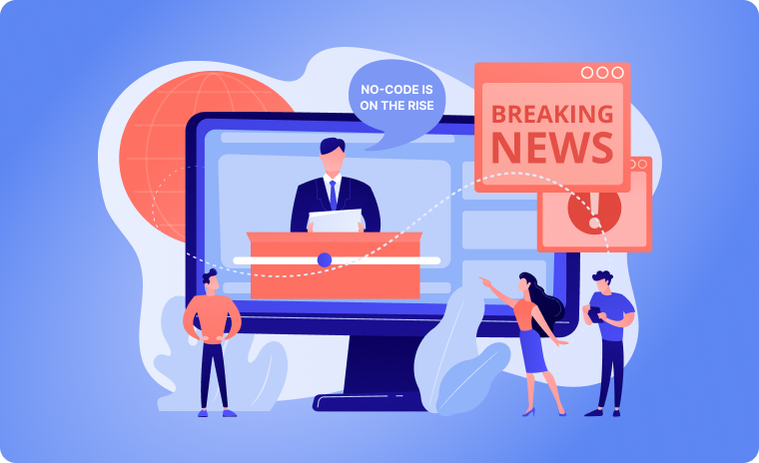Zapier No-Code Report: An Analysis of the No-code Community
What we think of ourselves rarely matches how others see us. Russell Westbrook, the all-star guard for the Los Angeles Lakers, probably thinks he is still one of the superstars of the game (his attitude would have you think so) when actually he is having one of the worst offensive seasons in the history of the NBA. He could use a reality check, but it would be a challenge to convince a player on a $44 million contract to take a smaller role that could justify his performance.
Things are going extremely well in the no-code land these days. As people working in this particular segment of the software industry, we can't help but get excited about the future: Startups are gaining traction. Even non-tech-savvy people are taking note of no-code tools and slowly awakening to their potential. Capital keeps flowing in at never-seen-before rates. What's there not to like? We think the future belongs to no-code, but is that so? How do the no-coders see their experience with the no-code technology? What can we learn from them?
Riding the pandemic wave
No-code automation platform Zapier has recently published a report about the impact no-code has had on individuals and businesses. The findings in the report give us valuable insights into how no-code tools have been received by the community.
The first figure from the report tells us that 82 percent of the no-code users started using no-code tools in the last two years. This piece of information speaks to the transformative effect of the global pandemic, confirming a point we repeatedly emphasized in our blog posts. The pandemic dealt a powerful and unexpected blow to the business world. Overwhelmed by the lockdowns and labor shortages, companies turned to no-code technologies to automate as many processes as possible and tried to rethink them in a way that incorporates no-code. As a result, no-code tools covered more ground in two years than they would be expected to do in a decade.
Developers love no-code
Another striking point mentioned in the report is the level of technical knowledge the users of no-code platforms have. 88 percent of the respondents in the study possessed some level of coding knowledge, and 35 percent of the respondents are indeed professional developers.
This last figure is in line with the experience we had with our customers, one-third of whom are developers. Although this should make us rethink why people without a coding background struggle to adopt no-code technology, it also demonstrates that developers are open to what no-code can do for them. We can finally put to sleep once and for all the worries about no-code technology and developers becoming mortal enemies and developers not taking no-code tools seriously.
A little bit of homework for us
The biggest hurdles for people working with no-code technology involve troubleshooting moments. People seem to get stuck in case of a problem as they don't know their way around this new domain. Lack of examples is among the cited complaints as well. These struggles come as no surprise, as only 31 percent of the respondents received formal training from their companies about the no-code tools they used. The majority of the respondents seem to be self-taught thanks to watching videos and attending online classes.
The no-code community has come a long way in educating the public, but it looks like our job is not done yet. We must make an organized effort to further lower the barriers for no-coders. Seeking government backing in reskilling employees and students as no-coders would be a step in the right direction for the industry.
At Peaka, we have been expanding our documentation and adding videos to our Youtube channel in order to mitigate such difficulties. The fact that people have trouble solving the problems they run into indicates that no-coders can benefit from a more structured start to app building so that they won't get lost. Templates are great for getting your feet wet in app building if you have no prior experience, and that's why we have been relentlessly growing our collection of ready-made templates.
Conclusion
The bright spot is that 65 percent of people use no-code tools at least once a week. This usage rate implies that these tools have become part of the job for two-thirds of the respondents. Unlike the plethora of other software tools we download and forget about, no-code platforms deliver real business value and keep people engaged.
Zapier's recent study sheds light on the friction points no-coders face. If not dealt with properly, these issues may keep the capabilities of platforms from fully translating into value for the customers. Perfecting the onboarding process and empowering the no-coders to unlock the existing capabilities could help no-code platforms pick the low-hanging fruit. For a no-code platform looking for a high-impact move to improve its bottom line, greasing the wheels for the already-converted no-coders should be the top priority.




 Please
fill out this field
Please
fill out this field









